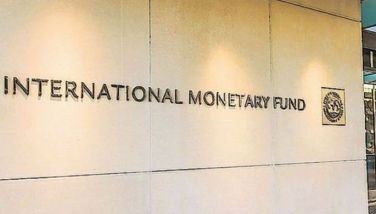Debt service burden rises 20 percent to $14.5 billion

MANILA, Philippines — The country’s external debt service burden increased in the 10 months to October 2024 as foreign debt hit an all-time high of $139.64 billion in the third quarter, the Bangko Sentral ng Pilipinas (BSP) said.
Based on preliminary data, debt service burden jumped by 19.8 percent to $14.48 billion from January to October last year compared to $12.08 billion in the same period in 2023.
During the 10-month period, principal payments surged by 23.6 percent to $7.85 billion from $6.35 billion a year ago. Likewise, interest payments rose by 15.7 percent to $6.63 billion in the first 10 months from $5.73 billion.
The external debt service burden refers to the amount of money a country needs to pay back for the loans it has taken from other countries or organizations abroad. It represents principal and interest payments after rescheduling.
It consists of principal and interest payments on fixed medium and long-term credits, including International Monetary Fund (IMF) credits, loans covered by the Paris Club and commercial banks’ rescheduling and new money facilities.
It also includes interest payments on fixed and revolving short-term liabilities of banks and non-banks, excluding prepayments on future years’ maturities of foreign loans and principal payments on fixed and revolving short-term liabilities of banks and non-banks.
Latest data from the central bank showed that the country’s foreign debt climbed by 17.5 percent to $139.64 billion as of end-September 2024 from a year-ago level of $118.83 billion.
The rise in the debt level as of the third quarter last year was driven primarily by higher borrowings of the national government and the private sector.
Public sector external debt grew by 8.8 percent to $86.88 billion in the third quarter from $79.83 billion in the second quarter, with its share of total debt at 62.2 percent.
About 92.2 percent of public sector borrowings are attributed to the national government, while the remaining 7.8 percent pertained to borrowings of government-owned and controlled corporations, government financial institutions and the BSP.
Meanwhile, the private sector’s foreign borrowings rose by 4.8 percent to $52.76 billion in the third quarter from $50.36 billion a quarter prior.
The national government borrows heavily from foreign and domestic creditors to finance the country’s budget deficit as it spends more than what it actually earns.
- Latest
- Trending
























